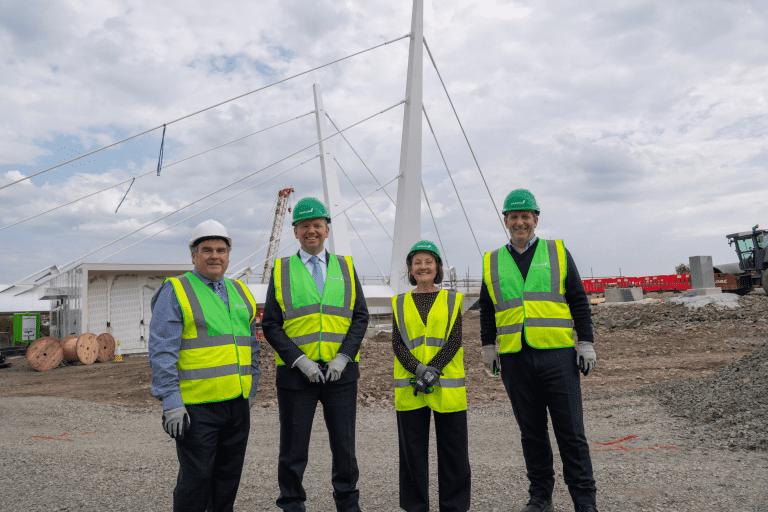Glenigan’s May Index finds increasing pockets of Growth amidst overall slowdown. Today, Glenigan, one of the construction industry’s leading insight experts, releases the May 2024 edition of its Construction Index.The Index focuses on the three months to the end of April 2024, covering all underlying projects, with a total value of £100m or less (unless otherwise indicated), with all figures seasonally adjusted. It’s a report which provides a detailed and comprehensive analysis of year-on-year construction data, giving built environment professionals a unique insight into sector performance over the last 12 months. The May Index is a mixed bag. Whilst the industry is undoubtedly struggling against strong social, political and economic headwinds, some sector verticals rallied. Hotel & leisure and office starts posted positive results compared to April figures. Whilst the value of underlying work starting on site during the three months to April experienced a 15% decline, and dropped 12% compared to 2023, the downward curve is starting to level out. Since January 2024, whilst performance is lower than the previous year, figures encouragingly remain stable. As Glenigan’s economist, Drilon Baca, says, “Whilst the first month of Q.2 remains weak, there has not been as dramatic a drop as we saw in Q.4 2023. Consumer confidence is gradually returning and the freeze private investment will likely thaw should this trend continue. In the public sector, all eyes will be on a new Government in H.2 2024, with departments often increasing funding for capital projects following a post-election spending review.” Taking a closer look at the sector verticals and the regional outlook… Sector Analysis – Residential Residential construction starts fell by almost a fifth (-18%) compared to 2023, and were down 16% on the preceding three months. Private housing dipped 14% against the previous three months to April, and decreased 17% compared to last year. The Index period was worse for social housing, tumbling 21% and weakening 19% against 2023 levels. Sector Analysis – Non-Residential There were a few reasons to be optimistic within non-residential verticals. The strongest performer in the May Index was hotel & leisure, which increased 11% against the preceding three months and last year. This welcome uptick was closely followed by office starts, which rose 7% during the Index period to finish 8% up on 2023 levels. Performance in some verticals was mixed. Whilst education saw the value of starts increase 9% against the preceding three months, it remained 7% lower than a year ago. In contrast, health starts decreased by 22% during the Index period, yet rose by the same amount compared to last year. This latter boost on 2023 can be attributed to the £80m development of a hospital ambulatory diagnostic centre at West Middlesex University Hospital, Isleworth, London. Even more impressive, despite decreasing 25% against the preceding three months, community and amenity starts were up a massive 46% on the previous year. Again, retail decreased 9% during the Index period, but demonstrated renewed strength when measured against 2023 activity, posting a 27% jump in performance levels. Despite showing a far more encouraging set of results compared to recent editions of the Index, some verticals remained in the doldrums. Industrial project starts experienced a poor period, with the value of starts on site slashed by 27% during the three months to April, down 43% compared to 2023. Civils plummeted by a third (-32%) during the Index period and dipped a modest 4% on 2023 levels. This was reflected in the infrastructure and utilities sub-verticals, which were down 31% and 32% against the preceding three months, and 4% and 3% below 2023 levels, respectively. Regional Outlook Performance was inconsistent across UK regions, however there were a few bright spots of activity. Northern Ireland fared particularly well, increasing 20% against the preceding three months to stand 33% up on the previous year. This can be partly attributed to a sharp boost in hotel & leisure-related activity, continuing the region’s recent growth streak. Elsewhere, it was an inconsistent picture, the North East saw the value of starts decrease by 2%, yet increase by 38% against 2023 figures. Whilst the value of starts in the South West declined 9% on last year, it was up 12% during the Index period. The North West stumbled 1% against the previous year and saw a modest increase of 2% in the three months to the end of April. Elsewhere, it was nothing but decline. Wales registered the worst performance of all, seeing the value of starts compared to 2023 almost halved (-44%) and over a third (-37%) against the preceding three months. It was a similar story in the East Midlands, which registered a dismal 43% drop on last year’s figures to slump by exactly a third (-33%) when matched against the three months to April. To varying degrees, London, South East, West Midlands, East of England, Yorkshire & Humber and Scotland, all posted declines during the Index period and compared to 2023 levels. Building, Design & Construction Magazine | The Choice of Industry Professionals











